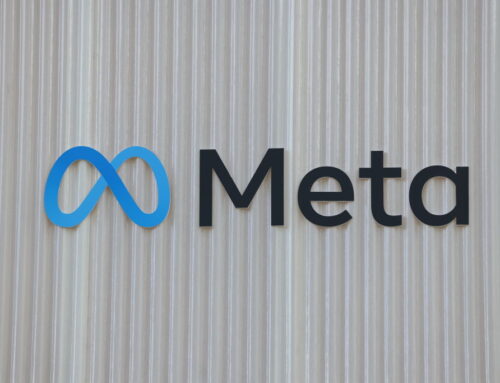Seize the Moment to Deepen the Energy Partnership with India
November 19, 2025
The End of a Lucrative Deal
After Russia’s full-scale invasion of Ukraine, most EU countries cut off their imports of Russian crude oil. The Kremlin needed alternative destinations for its primary export and offered India discounts of $20–$25 per barrel in comparison to the internationally-set Brent Crude index. As a result, Russia’s share of Indian oil imports rose – despite continuing high freight costs – from a pre-war average of 2 percent to 39 percent by 2023.
Over time, however, this discount lessened to around $1 to $1.15 per barrel or, more recently, $2 to $2.50 per barrel. Indian refineries, especially state-owned companies, reduced their imports of Russian oil over the summer.
On top of these dwindling financial incentives came political pressure. In September 2025, US President Donald Trump announced that Prime Minister Narendra Modi had promised to phase out Russian oil. On October 22, the imposition of US sanctions on Lukoil and Rosneft further shifted the calculus, forcing Indian refineries to end their purchases from these Russian oil majors to keep their access to Western capital markets.
Reportedly Reliance, which runs the world’s largest refinery in Gujarat, has stopped buying Russian oil. This leaves just one firm as a buyer, Nayara Energy, which is majority-owned by Russian investors and Rosneft and controls India’s second largest refinery.
Pushed Into a Corner
Even if most Indian refineries are bowing to the pressure of US sanctions against Russia, Trump’s hard line on tariffs and migration policies have damaged relations with India. India now faces one of the highest US tariffs worldwide: In August, a 25 percent surcharge for purchasing Russian oil were added to the earlier 25 percent ‘reciprocal tariffs.’ While Delhi is currently scrambling to patch up the relationship with Washington, trust that was carefully built over 25 years has been lost.
The Indian strategic community therefore increasingly recognizes the value of alternatives. In some areas, like defense and intelligence cooperation, there are no replacements for the United States, but European countries can step up to supply investment, education and skills, technology, and defense equipment.
Equally important, the downturn in Indo-US relations offers Europe an opportunity to land a symbolic win. For instance, the 2008 Indo-US Civil Nuclear Deal was viewed as the launching pad for two decades of improving relations. Another example is the 1998 Indo-French Strategic Partnership, concluded just as India was facing international condemnation for testing nuclear weapons, which earned the French state near-unparalleled high regard among Indian officials.
A Historic Opportunity for Germany
A well-publicized political Indo-German deal at this time, if presented in the context of Trump’s actions, could similarly capture the political moment. It represents an outsized opportunity for Germany to build trust with Indian policymakers and establish the country in the top tier of Delhi’s global partners.
Germany has courted India for over two decades. The previous government (2021-2024) led by then-Chancellor Olaf Scholz stepped up efforts through top-level political visits and the launch of a ‘Focus on India’ paper in 2024 that underlined the relationship’s importance. Chancellor Friedrich Merz is planning a visit in the next few months, making India his first Asian destination. At the EU level, too, India’s importance is rising, with an (over)optimistic deadline set to conclude trade negotiations by the end of the year.
For policymakers in Berlin, close relations with India, a country with robust economic growth and an expanding middle class, offers important economic opportunities. More strategically, Berlin recognizes India’s status as a rising power and hopes that both countries can cooperate to shape the global order. Specifically, India is believed to share German concerns about China and an interest in maintaining a rules-based order. Berlin hopes that India, given its size, economic growth, and geography, will act as a balancing power, constraining Chinese influence.
A Green Deal
Delhi currently prioritizes patching up ties with the Trump administration. Nevertheless, Berlin should continue to cultivate initiatives across numerous fields including defense, skilled migration, space, academic partnerships, and trade. Given the current focus on energy, a deal on green technology would be especially timely. International oil pressures are a reminder to both countries of renewables’ value in providing greater energy independence.
Such an initiative would build on an existing significant partnership. Joint energy initiatives began in 2006, culminating in the 2022 Indo-German Partnership for Green and Sustainable Development. Under this banner, German development agencies provide technical aid and financial support worth EUR 10 billion to help India reach its goal of generating 500 gigawatts of non-fossil electricity by 2030 and assist communities in moving away from coal mining. The two countries have also launched the India-Germany Platform for Investments in Renewable Energy Worldwide at RE-INVEST in 2024. A hydrogen partnership has been set up to help establish a global regulatory framework for this nascent technology.
De-Risking from China
While the energy partnership initially focused on German support for India’s adoption of renewables, a new phase should aim to establish both countries as green technology leaders, from research to manufacturing. Avoiding replication with the EU-India Trade and Technology Council and multilateral financial institutions, like the Global Gateway and the EBRD, is important. However, bilateral ties, given their flexibility, are best suited for the corporate, research, and technology partnerships necessary to achieve such goals.
In the past, Indian exports of green technology to Europe were limited by the size of Indian manufacturing and by competition with China. However, geopolitical developments including the imposition of tariffs by the United States and of export controls on rare earths and other technology by China, are creating new incentives.
Since 2023, India’s resurgent solar industry has increased its exports, reaching $2 billion in 2024. Under President Joe Biden, the United States were its main market abroad. As the Trump administration imposed tariffs and cut subsidies for renewables, that trend has been reversed. A further dampener is an investigation the US government has launched against India’s largest solar company, accusing it of falsely labelling imports.
Europe should seize this opportunity to become an alternative destination for Indian solar panels. Freight costs are lower than for panels from China, and India’s production is less carbon intensive. There are also some indicators that Indian solar panels are going down in price as scale increases. The German government should explore the opportunity for brokering solar panel purchases, using Indian Exim Bank finance. Cultivating India as an alternative supply source will help Germany and other European counties reduce their dependence on China, which currently dominates nearly all clean tech supply chains, particularly concerning solar power.
Options for the governments of Germany and India to engage in an expanded energy and clean technology partnership include:
- Supporting clean tech joint-ventures through the India-Germany Platform for Investments in Renewable Energy. The platform should be linked to existing industrial policy like India’s Production-Linked Incentive (PLI), which aims to increase independence and manufacturing strength, the ‘Make in India’ public procurement preference, and Germany’s Hermes risk insurance and Energy Export Initiative.
- Animate the Indo-German Science and Technology Centre by setting up a targeted joint fund for green technology innovation and manufacture, in line with the Roadmap on Innovation and Technology.
- Engaging in inter-governmental policy exchanges on green and industrial policies such as India’s UJALA scheme, which uses public procurement to enable cheap public access to greener technology.
- Scaling up trilateral partnerships, whereby India and Germany work in a third country in Africa and the Indo-Pacific, to transfer green technology and build renewable energy, which would fulfill the promise of the International Solar Alliance co-led by India. Trilateral cooperation should extend to securing imports of critical minerals from countries like Congo, Australia, and Indonesia.
Delivering an upgraded partnership will be complicated, not least by continuing constraints in India’s diplomatic capacity. Therefore, some of the above proposals involve working directly with the private sector, line ministries, and government agencies. Our proposal also has the advantage of putting both partners on an equal footing. India is keen to be treated internationally as an equal partner with strengths to offer, not only as a passive receiver of technology or finance.
Search
RECENT PRESS RELEASES
Related Post



